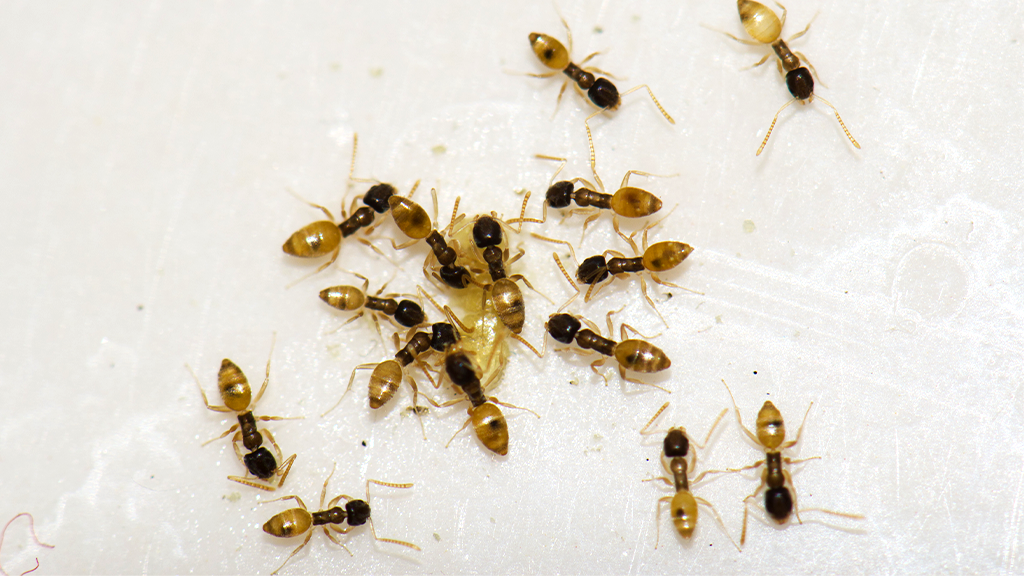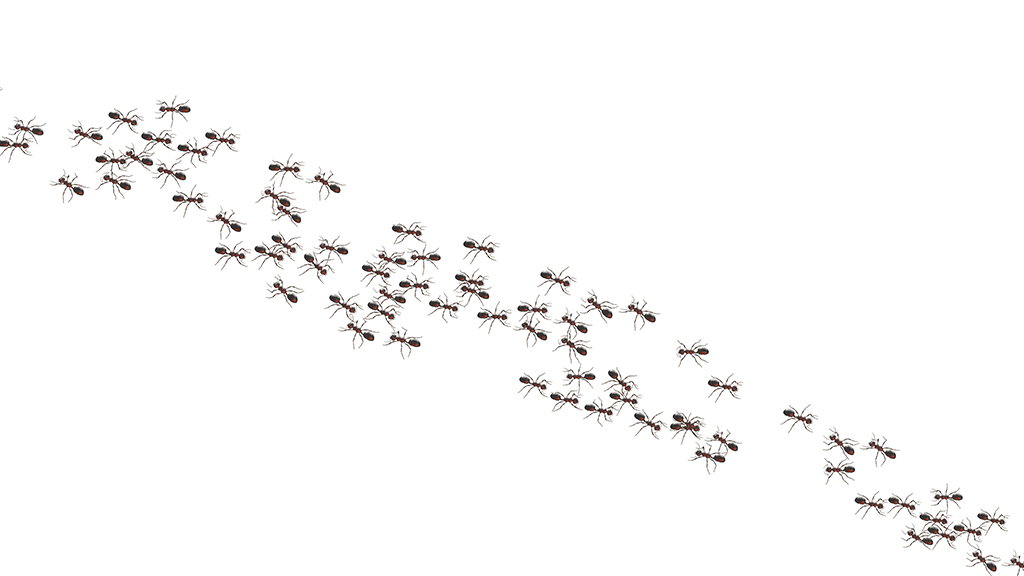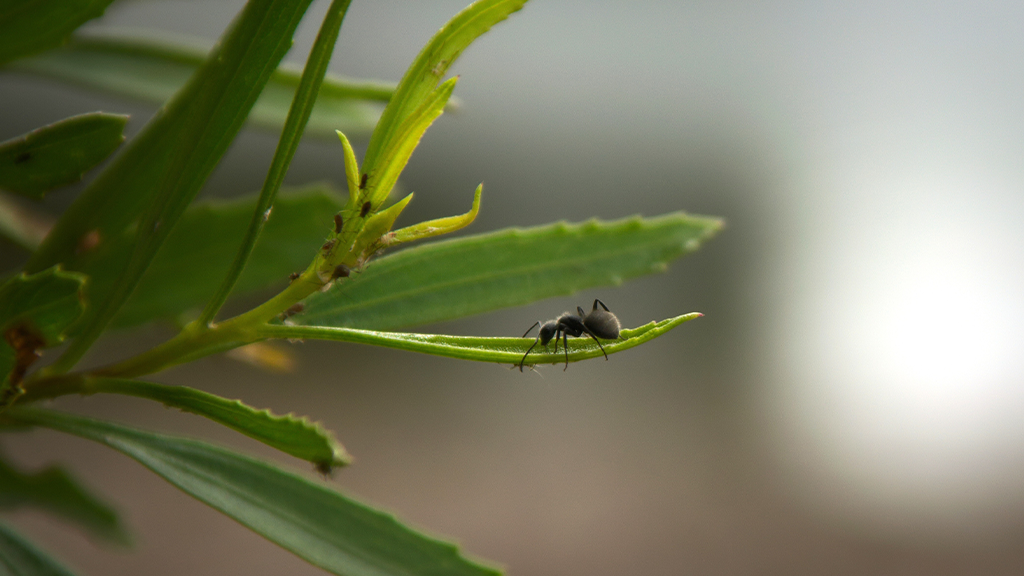ANT MONTH: All About… Argentine Ants
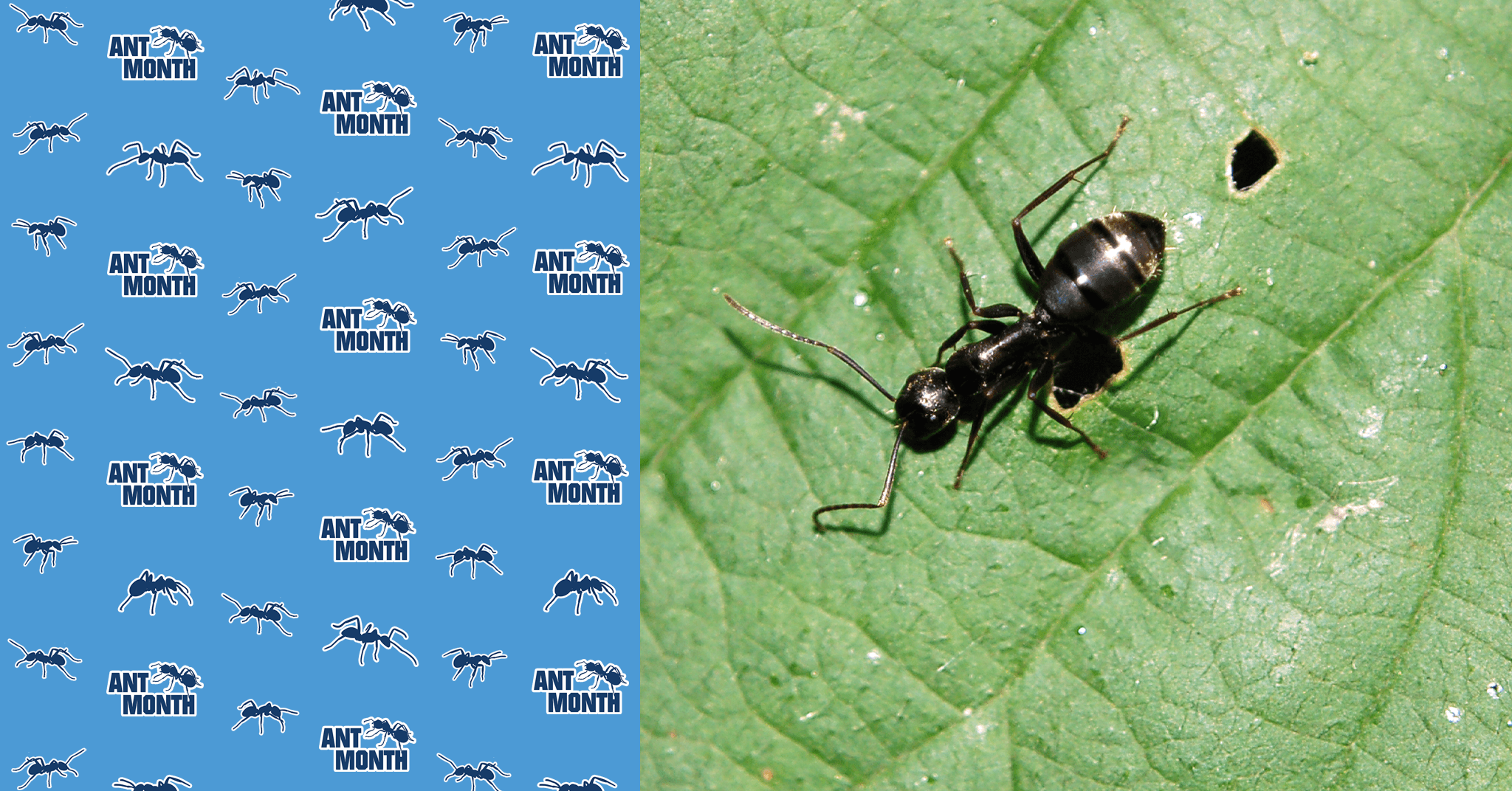
It’s Ant Month, our weeks-long series for year-round ant control. Get caught up on week one’s odorous house ant feature, week two’s fire ant spotlight, and get ready to meet week three’s pest—the invasive and highly prolific Argentine ant.
WHAT ARE ARGENTINE ANTS?
These trailing ants can be one of the trickiest to control due to their impressively large colonies. A colony of Argentine ants can range from thousands to a million ants or more, and considering that each colony typically has multiple queens, their populations can expand and take over rather swiftly. In fact, Argentine ants can be found in “supercolonies” formed from smaller colonies teaming together, many of which span up to thousands of square miles.
If that isn’t enough, these pesky ants build their large nests underground, with small mounds above the ground only reaching up to an inch or two high. Argentine ants have even adapted to a variety of weather, climate, and living conditions. Dozens of Argentine ant colonies could be in your neighborhood, regardless of whether you live in a suburban, rural, or even city or urban area.
WHAT DO THEY LOOK LIKE?
Uniform and brown, Argentine worker ants measure about 1/16 to ⅛ inch in length. Their hairless bodies feature straight, segmented antennae and a single node on the petiole that connects their thorax to their abdomen. These ants often appear shiny, ranging in several shades of light, dark, and dull brown.
They are often confused with odorous house ants not only due to their appearance, but because they also emit a foul odor when crushed (though their scent is musty compared to the odorous house ant’s rotten coconut smell when crushed). These bothersome bugs are also serious trailing ants, staying true and rarely veering from the pheromone trails left by foraging workers. Tracking high and low, Argentine ant trails can go up trees and structures or down low across a variety of surfaces—worst of all our kitchen floors.
WHAT DO ARGENTINE ANTS EAT?
Argentine ants aren’t the finicky type. Though they favor sweets, they also forage for meats, grains, vegetables, dairy, fats, plants (especially buds), and waste. These undiscerning ants swipe bites of just about anything, including dead insects and animals, so if they’re spotted marching in and out of your pantry, it’s best to err on the side of caution and toss out any potentially contaminated food.
Outdoors, they congregate near food sources that can sustain their large colonies and go to impressive lengths to keep it that way. Argentine ants are considered environmental threats due to their love of honeydew, the sweet secretion that comes from aphids, mealy bugs, and other plant pests. They often defend against several garden predators in order to protect their food supply, leaving plant-loving bugs to wreak havoc on your foliage.
WHERE ARE THESE ANTS COMING FROM?
Originally from Argentina, these non-native ants are believed to have climbed aboard a cargo ship delivering coffee from Brazil to New Orleans in the late 1890s. They quickly, and very successfully, spread throughout the southeastern United States to become one of the most common household invaders in the country. Argentine ants nest in just about any environment, but especially in moist areas. Nests can be found in exposed or concealed soil, under fallen logs, beneath debris, in trees, within shrubbery, and even beneath buildings.
While Argentine ants will venture indoors in search of food and water, they prefer the nesting conditions that the outdoors provide and will typically only nest in indoor locations if their outdoor nest is significantly compromised.
These ants are an obvious nuisance, but aren’t intrinsically dangerous to humans. Other creatures, however, aren’t so lucky. Argentine ants are markedly territorial and have been known to aggressively drive out other ant species, larger animals, wasps, and even kick birds out of their nests, leaving their young behind. Argentine ant colonies have a lot of mouths to feed, and foraging workers are likely traveling to multiple households, yards, and other locations to bring scraps back to their nests.
HOW DO I GET RID OF ARGENTINE ANTS?
Controlling Argentine ants isn’t a one-time event—it’s an ongoing process. Because of their large population size and complex colonies, Argentine ants can be tricky to remove. Luckily, a few simple solutions can prevent an unbridled infestation.
CORRECTLY PLACE BAIT: While Argentine ants have a varied diet and can be controlled using a variety of baits, improper placement can actually increase the chances of infestation. Baits, especially sweet ones, placed indoors act as an unwitting invitation for active workers to make their way into your home, bringing in foragers that may not have otherwise trekked inside. To avoid bringing in more unwanted ants, place baits only in outdoor locations near observed ant activity and be sure to follow the instructions on the label regarding usage.
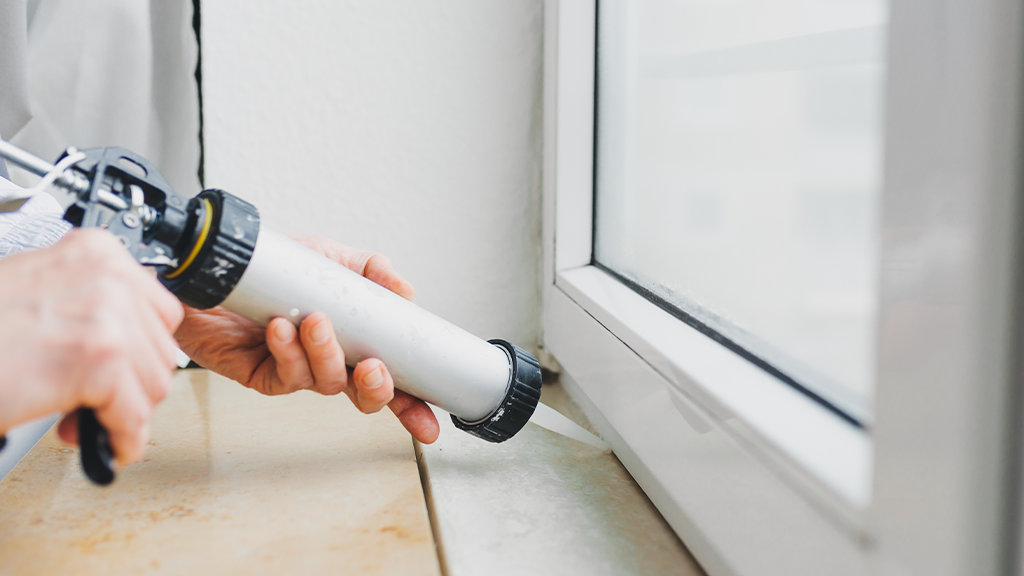
SEAL THEM OUT: Argentine ant nests are notoriously difficult to locate and treat. Not only that, but there may be numerous nests in the vicinity. To lessen the chance of an indoor invasion, take a look around for potential entry points around your home. Any small cracks, gaps, opened windows and doors, and weakened seals are like opened gates for these tiny pests. Make proper repairs along the perimeter of your home, sealing off both inside and outside gaps.
REMOVE FOOD SOURCES: The primary reason Argentine ants voyage indoors is to find food or water, and without an abundant source of either they will inevitably hunt elsewhere. Crumbs, spills, leaking pipes, and poorly stored food are all ant-magnets found, regrettably, in most households (even if we don’t want to admit it). Swiftly cleaning up messes, deep cleaning in often-forgotten areas, and storing food in airtight containers will deter these ants and leave no reason for foraging workers to stick around.

CLEAN UP PHEROMONE TRAILS: If Argentine ants have been spotted trailing to and fro in your kitchen, garage, or garden, they’re following a defined pheromone scent trail left by their workers to guide them to food and water sources. Detergents such as castile soap, Windex, baking soda, and Pine Sol can each be sprayed along observed ant trails to knock out the invisible scent trails guiding workers onto your countertops.
REDESIGN YOUR LANDSCAPING: Argentine ants can trail high and low, so any trees, shrubs, and prominent plants rooted near your home are like inadvertent highways connecting the outdoors to the inside of your home. Cut back overhanging tree limbs, clear any debris, and trim nearby foliage. Any vegetation making contact with the structure of your home can bring these pests inside, so prompt and thorough landscaping will cut off access to your home.
CALL IN THE PROFESSIONALS: Controlling Argentine ants can be a daunting task due to their large numbers, underground nesting sites, and undiscerning diet. Bringing pest control professionals in to survey, diagnose, and design a control plan can not only take a huge task off your plate, but also go a step further in ant control. Pest control experts are trained to locate and safely treat nest sites, apply commercial-grade bait and other treatments in effective locations, and provide ongoing maintenance for Argentine ants. To reduce the headache that is DIY ant control, contact one of our experts to take it off your hands.
Effectively controlling any ant infestation is no pleasant task. Our Ant Month series will be back next week for one more installment to help you tackle invasions, Argentine ants or otherwise, by guiding your DIY efforts in the most effective direction.

